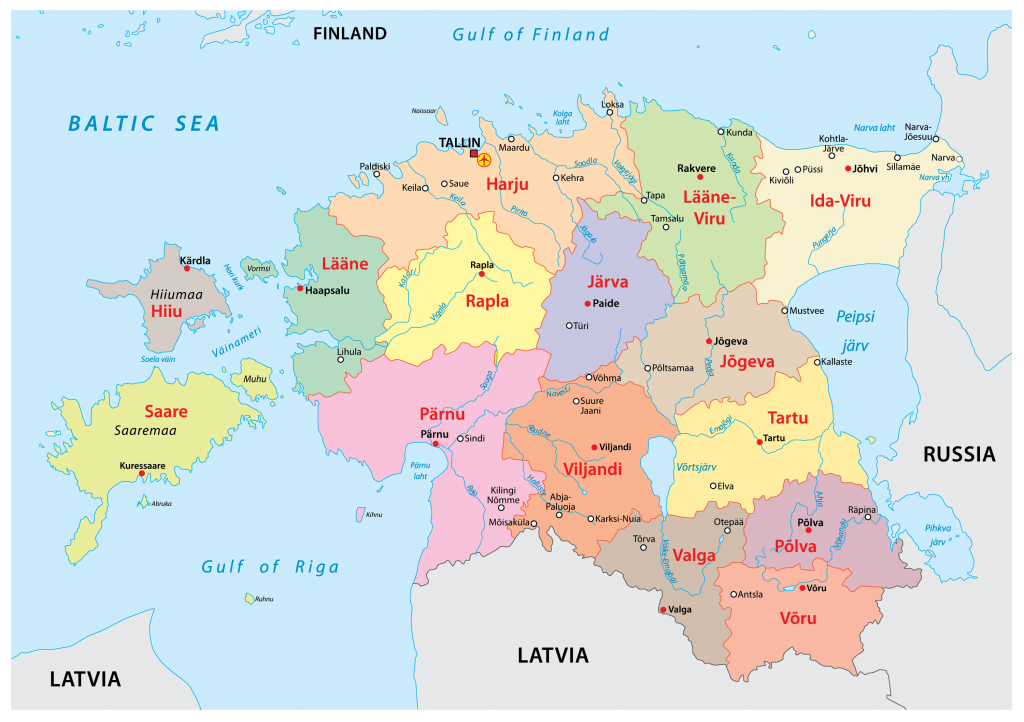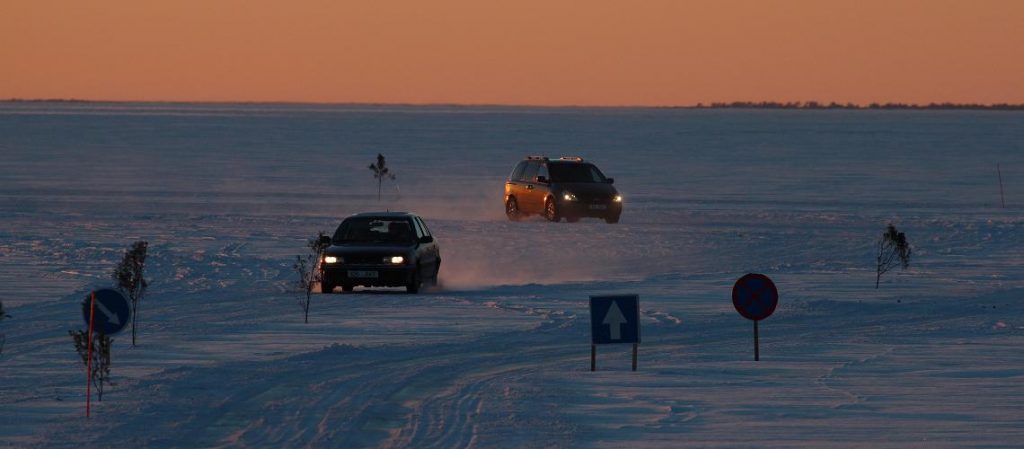The Road Where Seat Belts are Banned
If you’re driving, please, buckle your seat belt. According to the National Highway Transportation Safety Administration, Americans wear seat belts approximately 90% of the time they get into a car. But in 2019, of the more than 22,000 passengers who died in motor vehicle accidents, 47% weren’t wearing a seatbelt. While seatbelts aren’t going to prevent all accidents from becoming fatal, they’re going to prevent a lot of avoidable death. So, again, please: buckle up.
Unless that is, you’re driving on the Rohuküla-Heltermaa road in Estonia. In that case, please, don’t buckle up. Not only is it against the law, but it’s probably pretty dangerous.
To explain, let’s start with a map.

That’s Estonia above, with each of its 15 counties labeled. Toward the west are two large islands, labeled Hiiu and Saare. The county of Hiiu is of particular interest for our purposes today; it consists of one large island called Hiiumaa, and a handful of smaller islands that not only are too small to appear on the map but also don’t matter for our purposes.
For most of the year, if you want to go to Hiiumaa from the mainland, no problem — there’s a ferry. But Estonia is pretty far north and the winters can get cold. The straits and narrows of the Baltic Sea that connect Hiiumaa with the rest of Estonia almost always freeze over, with ice a few inches thick commonly forming. And that precludes ferries from continuing service.
The work-around is pretty easy, though: when the ice is that thick, cars can drive over it. From January to March, if conditions are right, Estonian authorities set up driving paths across the frozen water called “ice roads” (because they’re roads made of ice). They look a lot like test driving courses set in the desert, except that everything around them is white and snowy, and of course, there’s a literal ocean underneath the ice. Here’s a picture of one, via Visit Estonia.

Given that there’s no actual road there — and that there’s a really awful hazard beneath the surface — ice roads can be rather dangerous. In the case of the Rohuküla-Heltermaa ice road, that’s compounded by the fact that if you’re on it, the trip will take you at least half an hour; at just over 25 km (16 miles), it’s the longest such ice road in the area, so there’s plenty of time for something to go wrong.
To account for the unique dangers, the Rohuküla-Heltermaa (and ice roads generally) have unique safety rules. For example, there’s a speed limit, sure, but there’s also a speed floor. As the Guardian explains, “there is a particular danger between 25 and 40km/h (16 to 25 mph), because the motion of the car can produce a wave in the ice resembling the bow wave of a ship. Carry on for too long in this speed range, and the wave becomes powerful enough to crack the ice, with disastrous consequences.” There’s a weight limit — vehicles weighing 2.5 metric tonnes (about 5,500 lbs) or ore aren’t allowed on the roads unless they aim to turn into submarines. Vehicles need to keep a lot more space between them, too, as stopping times may be longer and crashes are harder to assist — per the BBC, there’s are traffic lights on two-minute timers on either end of the road, ensuring that two cars don’t enter the roadway too soon after one another. The road is shut down after sunset and, as the BBC notes in another report, “it is forbidden to wear a seatbelt: you might have to make an unexpected and speedy exit from your car.”
If you want to experience it for yourself, you can — tourists are welcome to take to the ice roads and have, to date, done so without major incident. But if that’s a little too scary for your tastes, this four-minute video highlight reel of someone driving the road (with some questionable background music) will give you a good feel for it. (If you’re wondering why there are planks of wood on the road, the less-than-reassuring explanation is that when the ice cracks too much, authorities cover with what are, effectively, very tiny bridges.)
Bonus fact: If you see someone from Finland taking a ferry to Estonia, there’s a really good chance they’re just on a beer run (or, more likely a hard alcohol run). Alcohol is heavily taxed in Finland and booze prices can be 90% higher there than anywhere else in the European Union. So, many Finns — perhaps as many as 2% of the population in any given year — go to Estonia to get their fix. In a typical year, Finns travel to Estonia and buy 40 million liters of alcohol, according to an Estonian news report. And for many, buying those drinks was the primary reason for the trip: “40 percent of passengers said that the low price level was the only or a significant reason to travel by ferry to Estonia.”
From the Archives: When Speeding Won’t Get You There Any Faster: A neat way Estonia tried to stop reckless driving.
